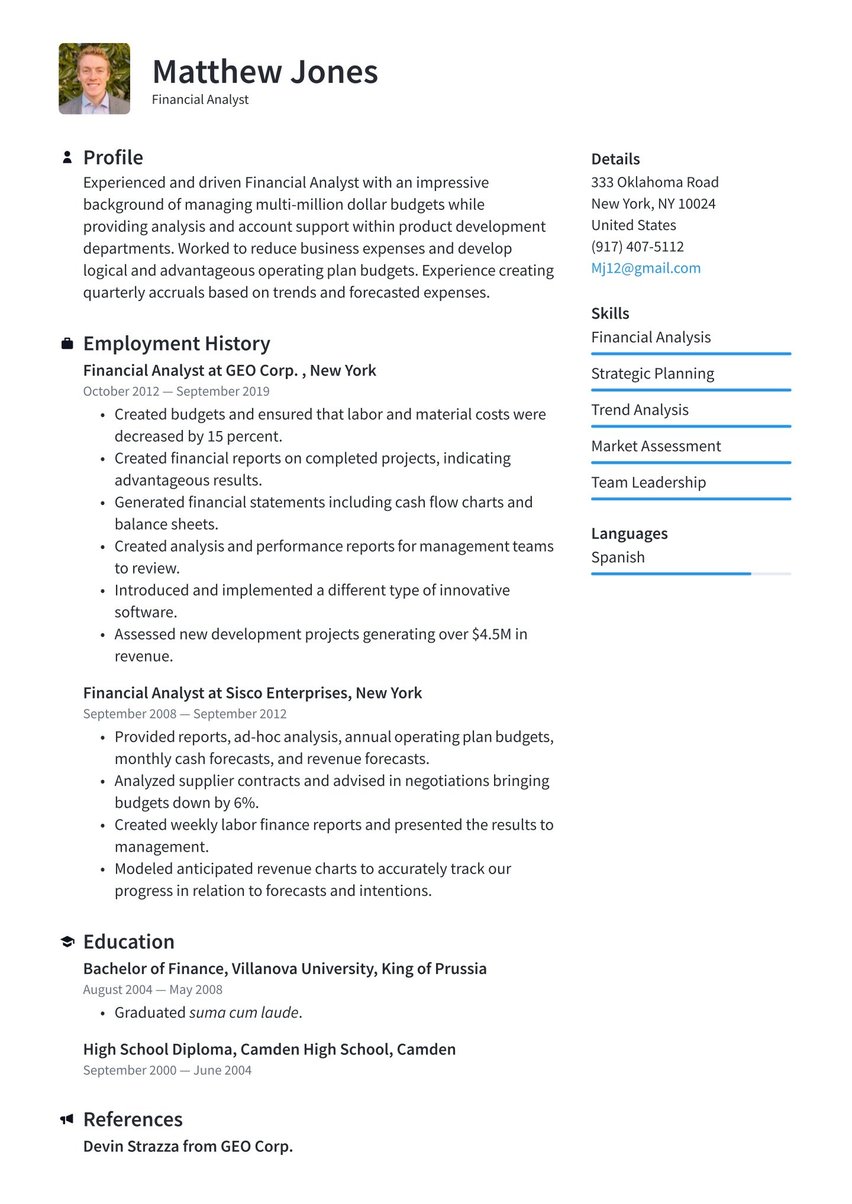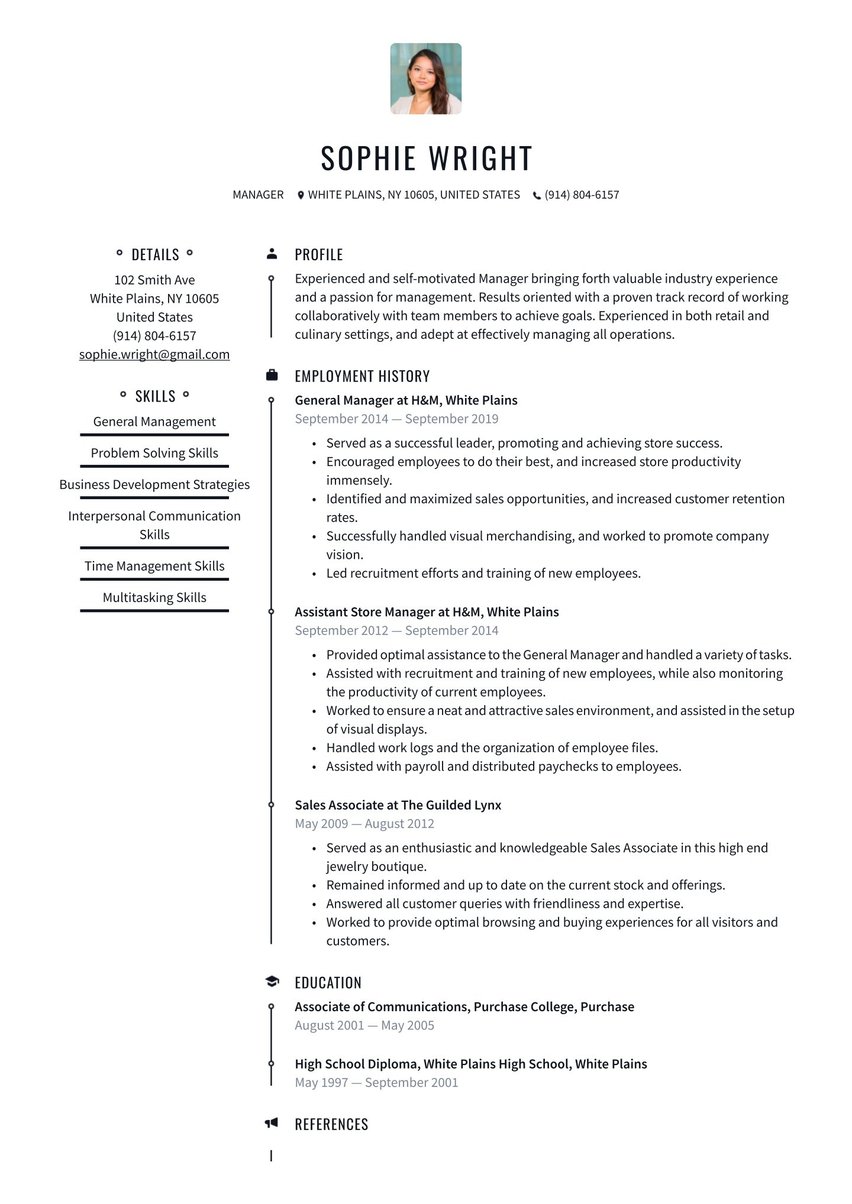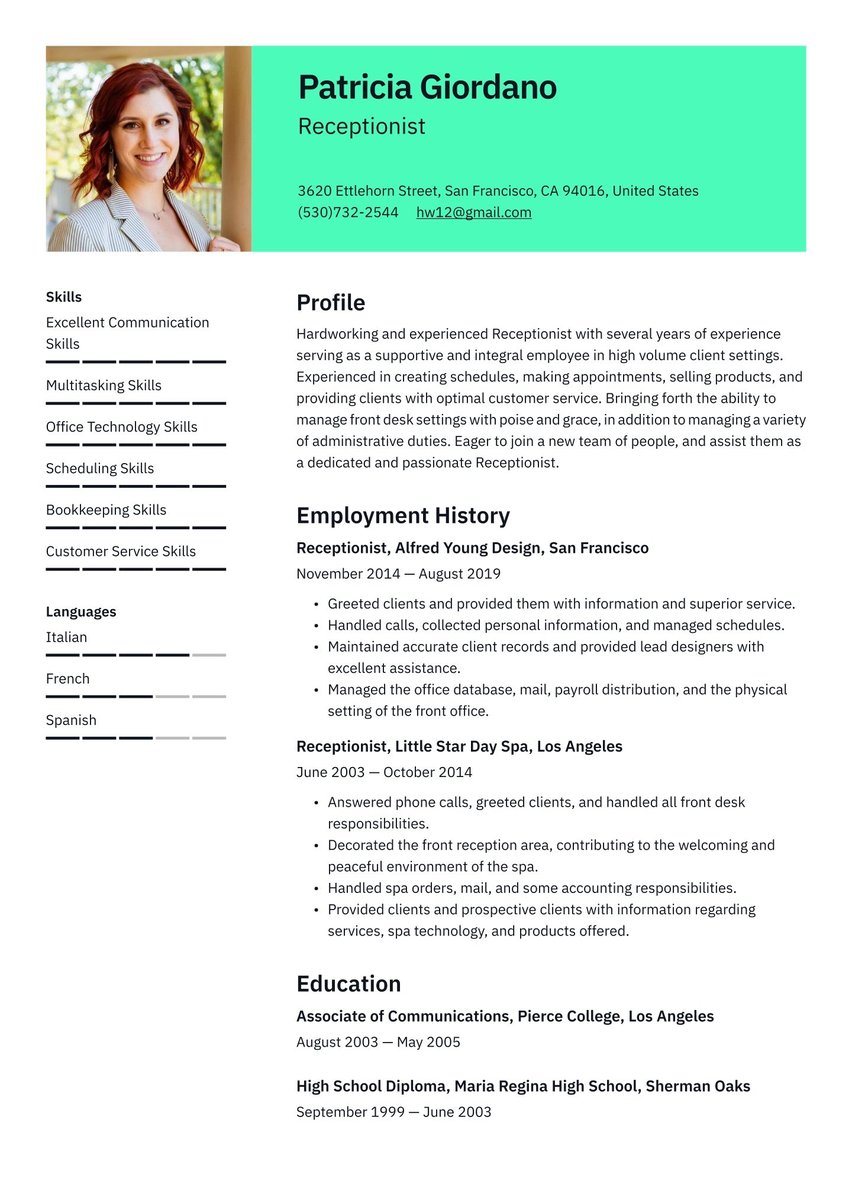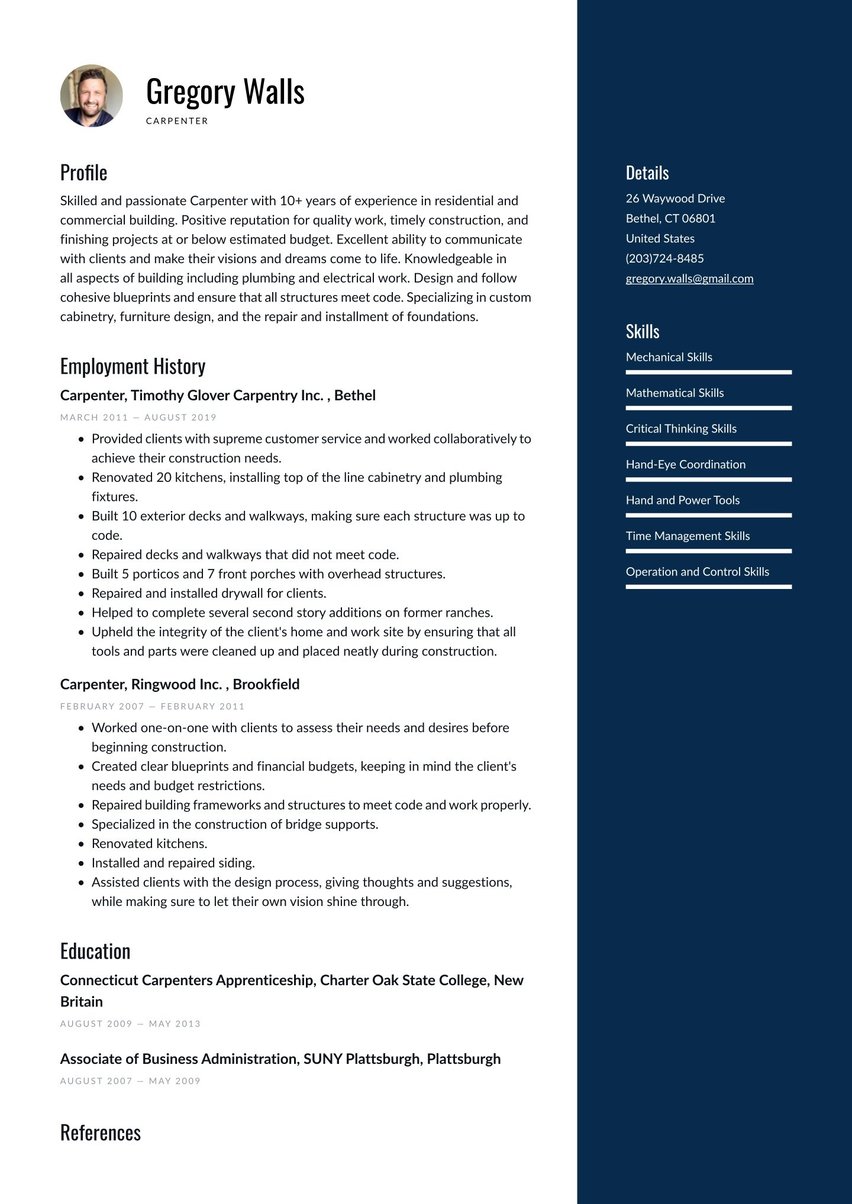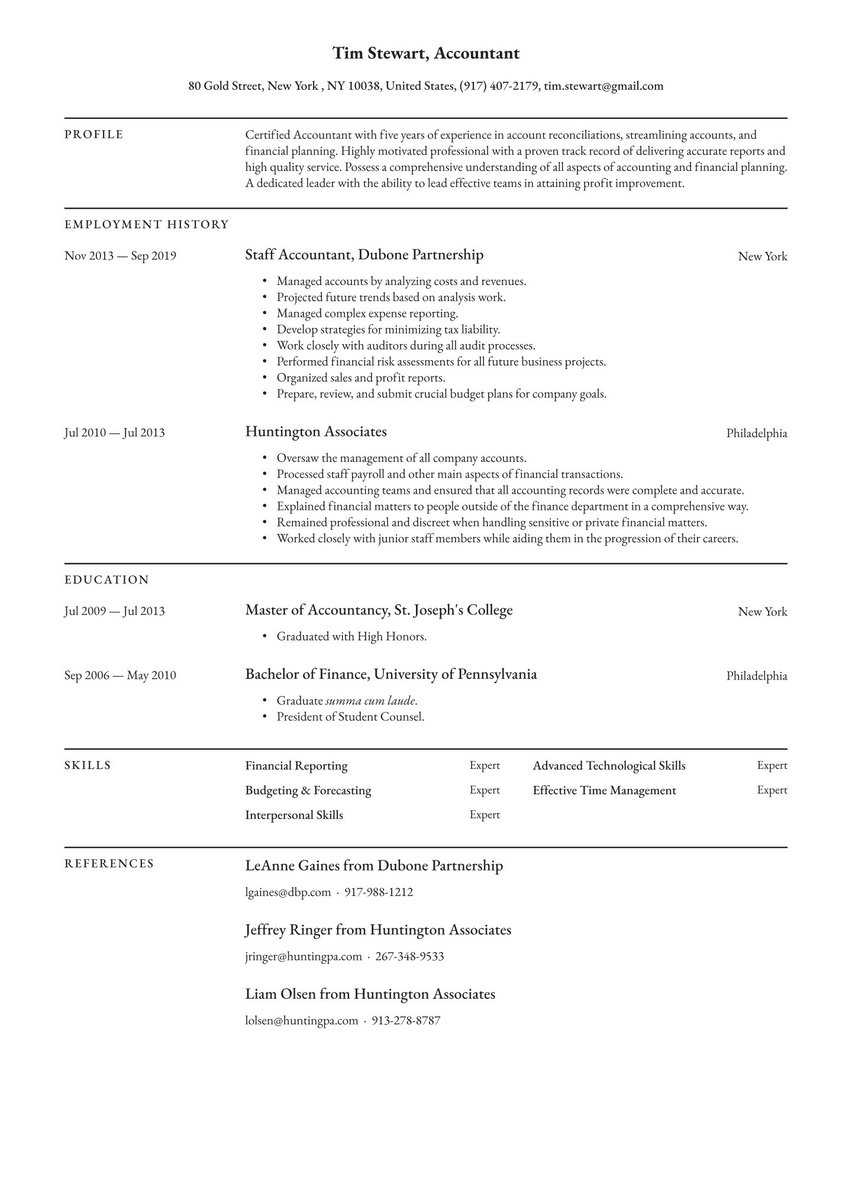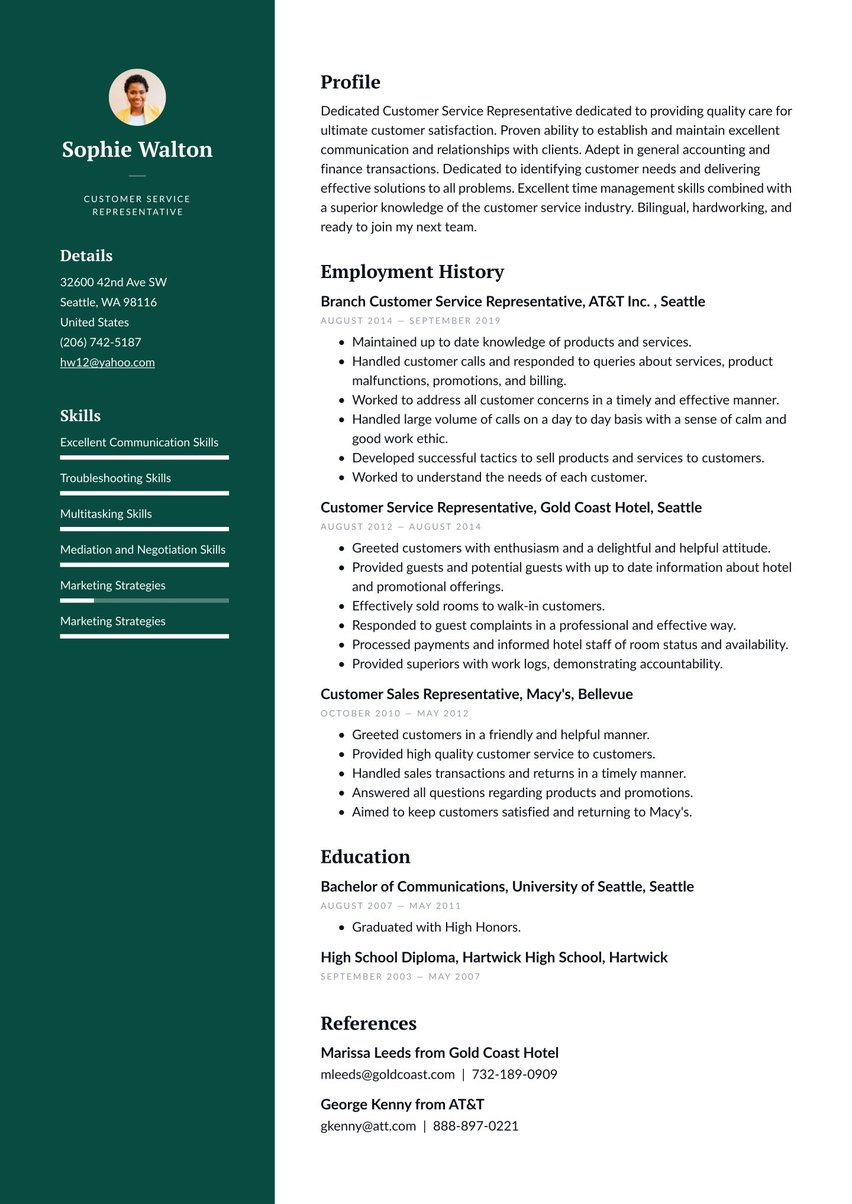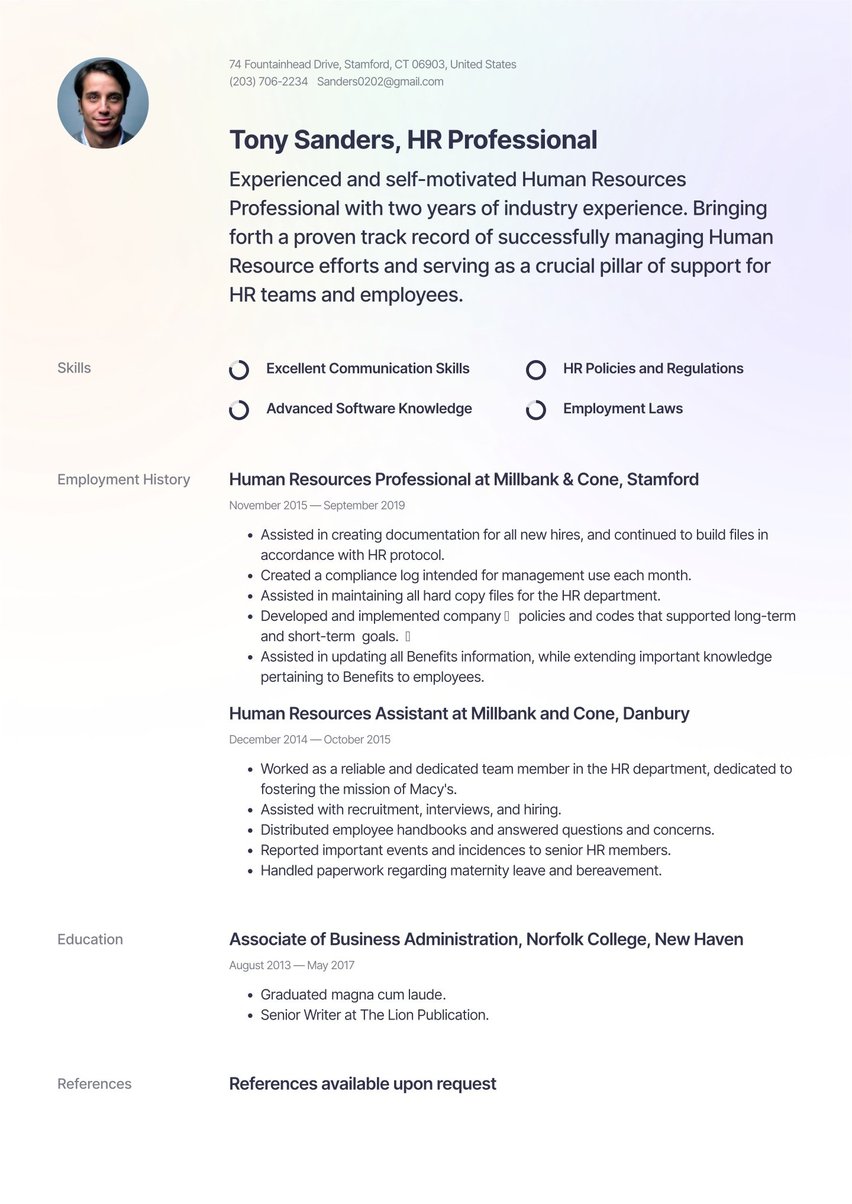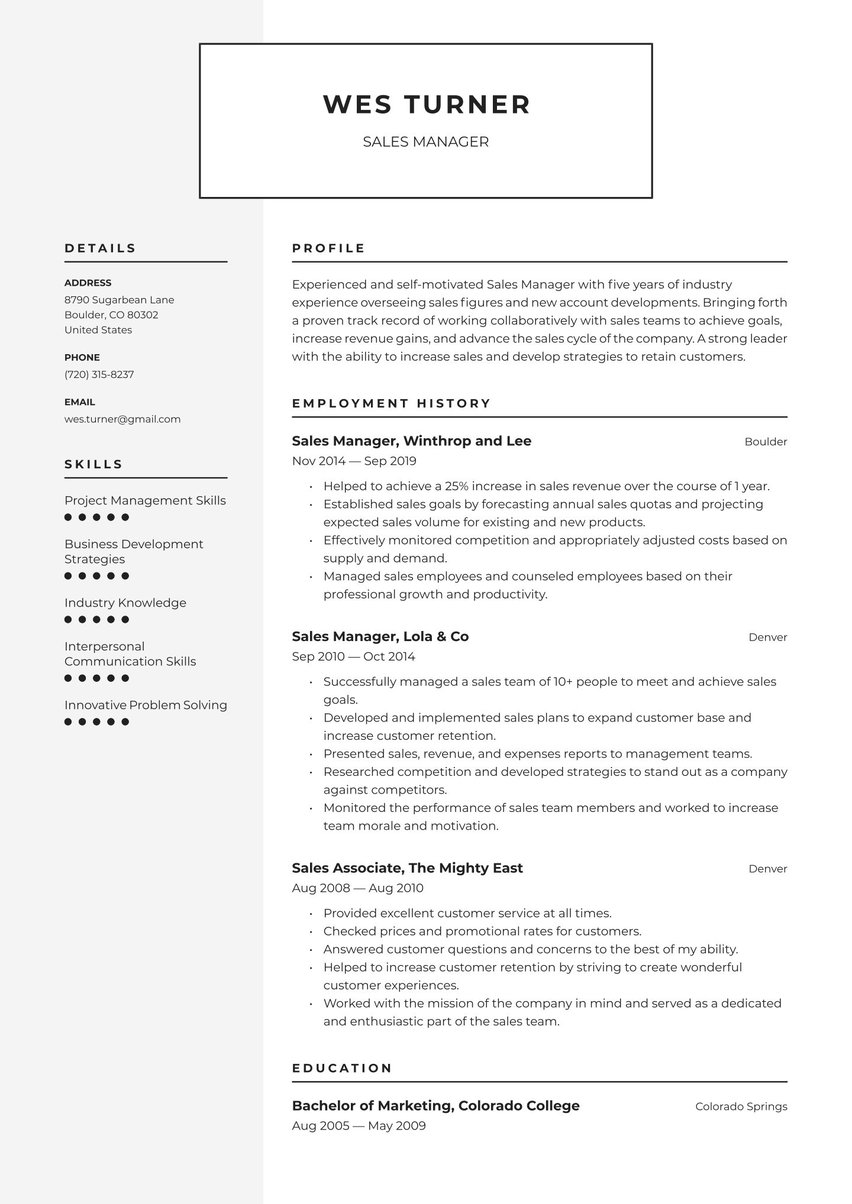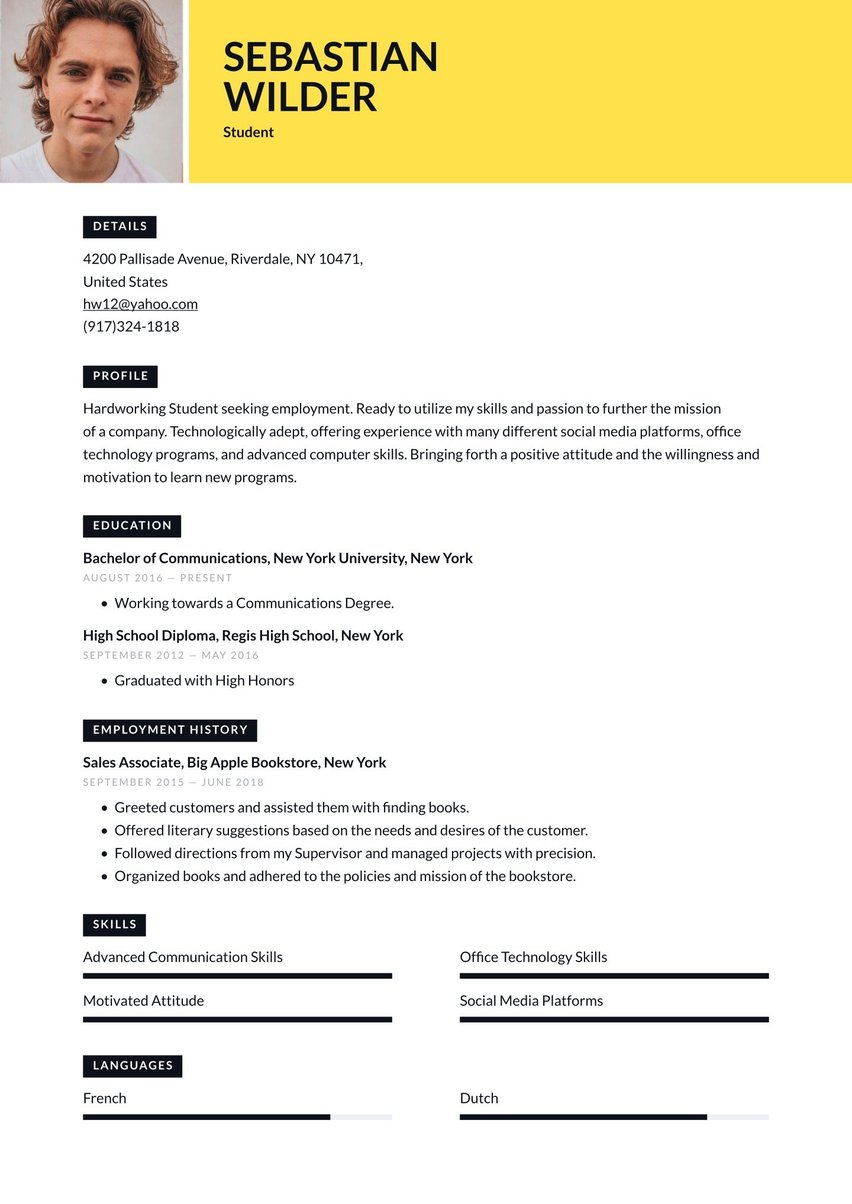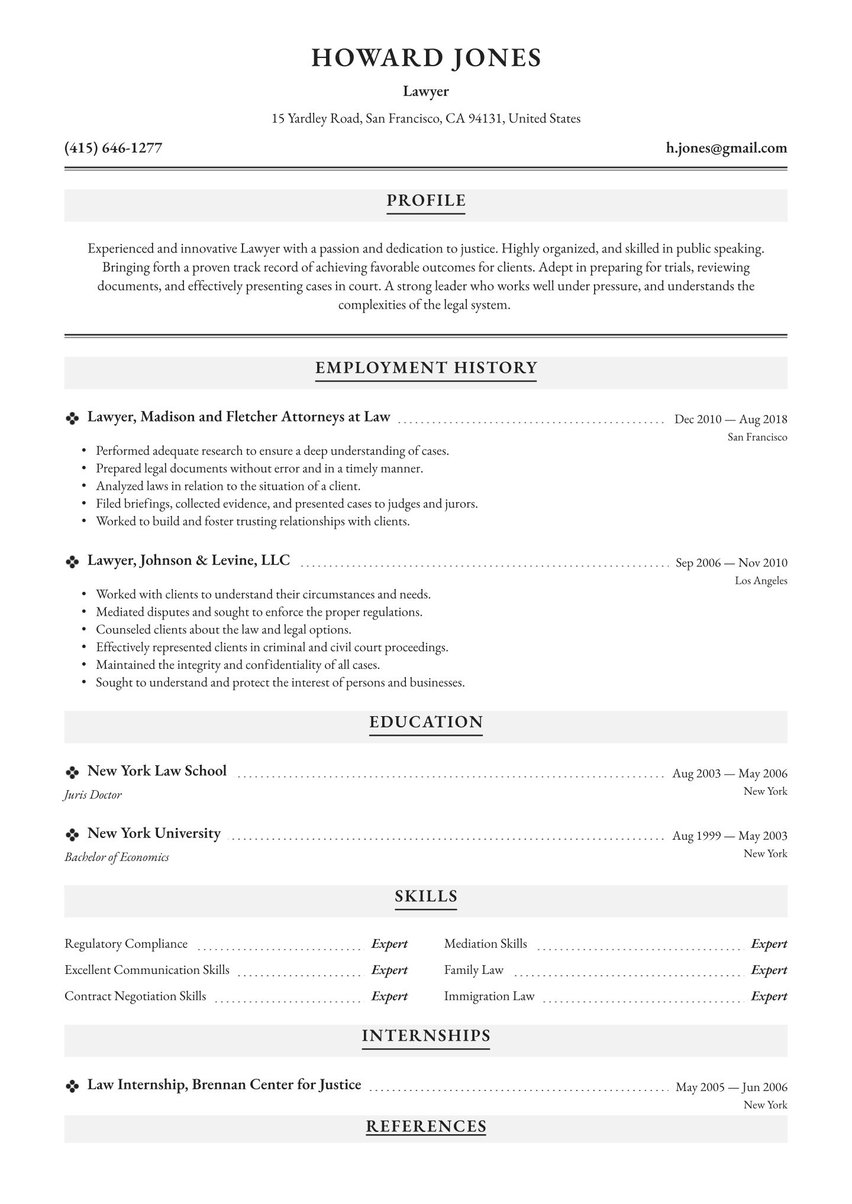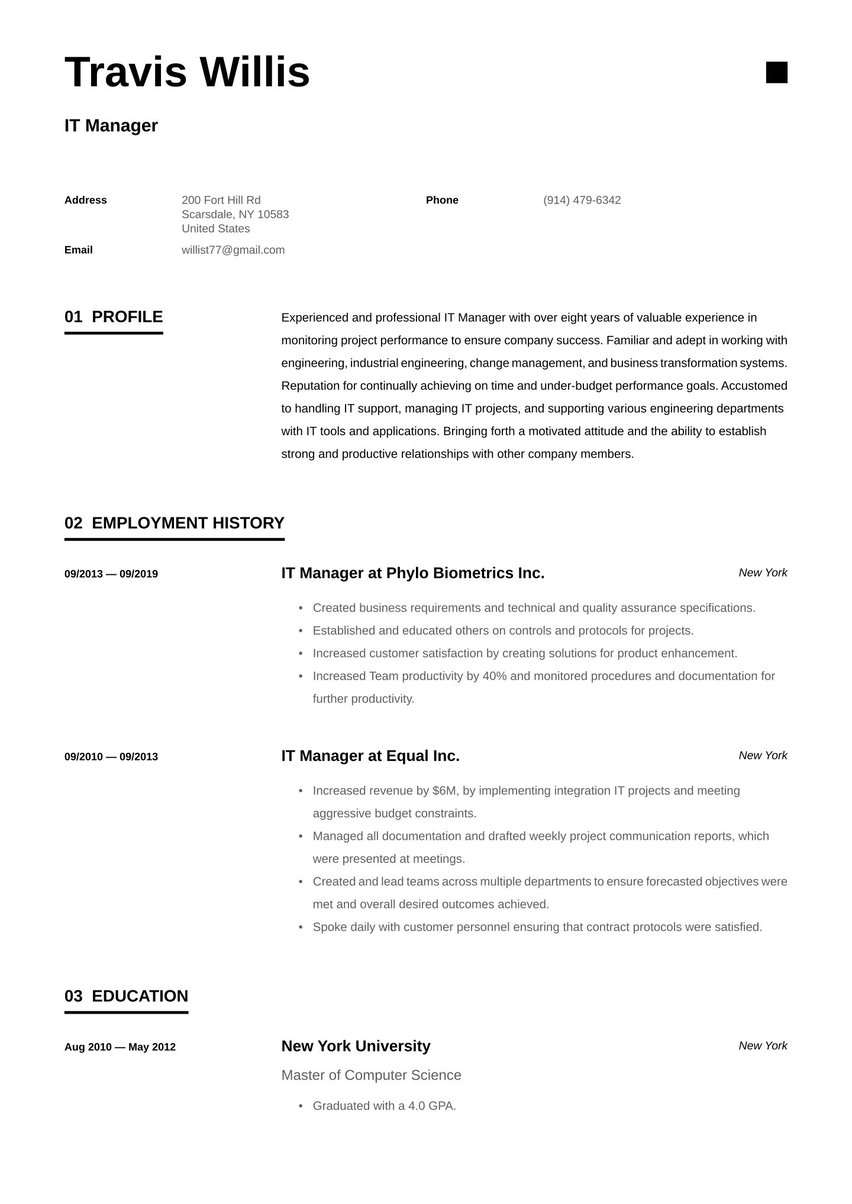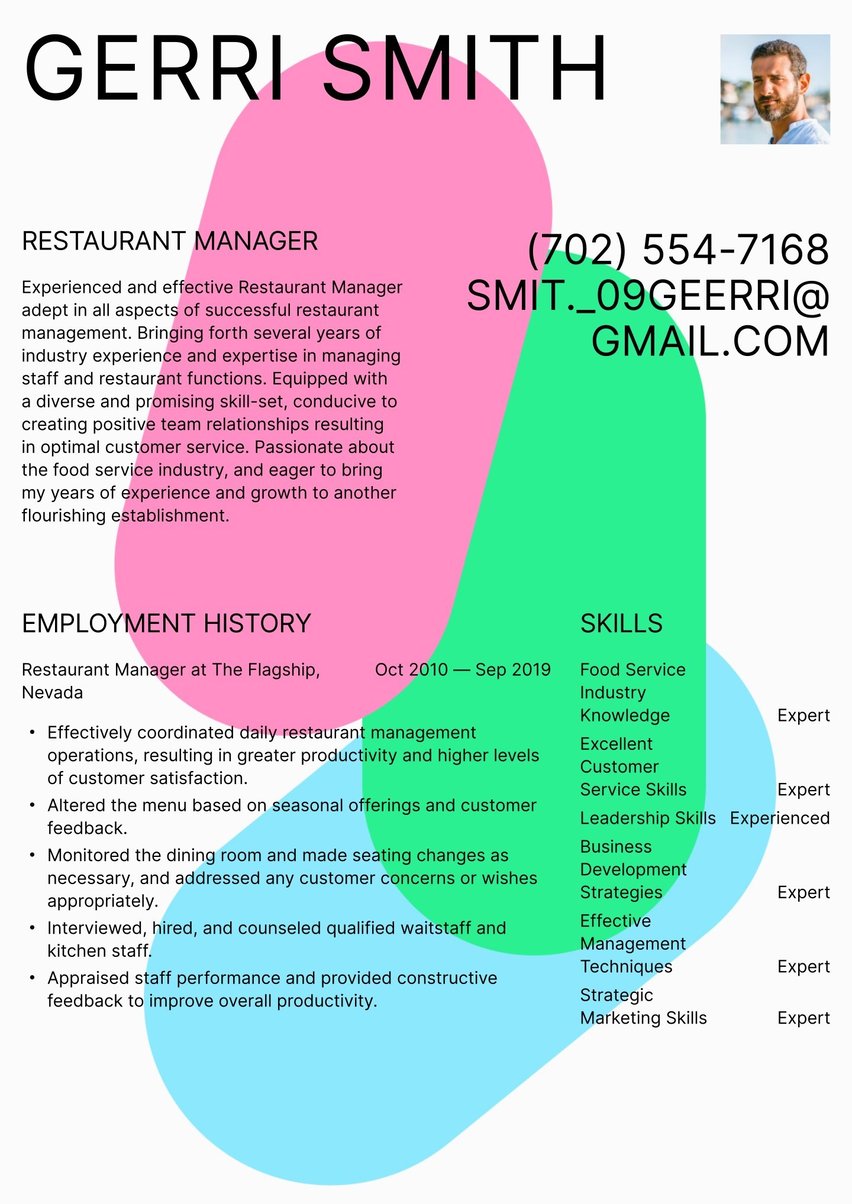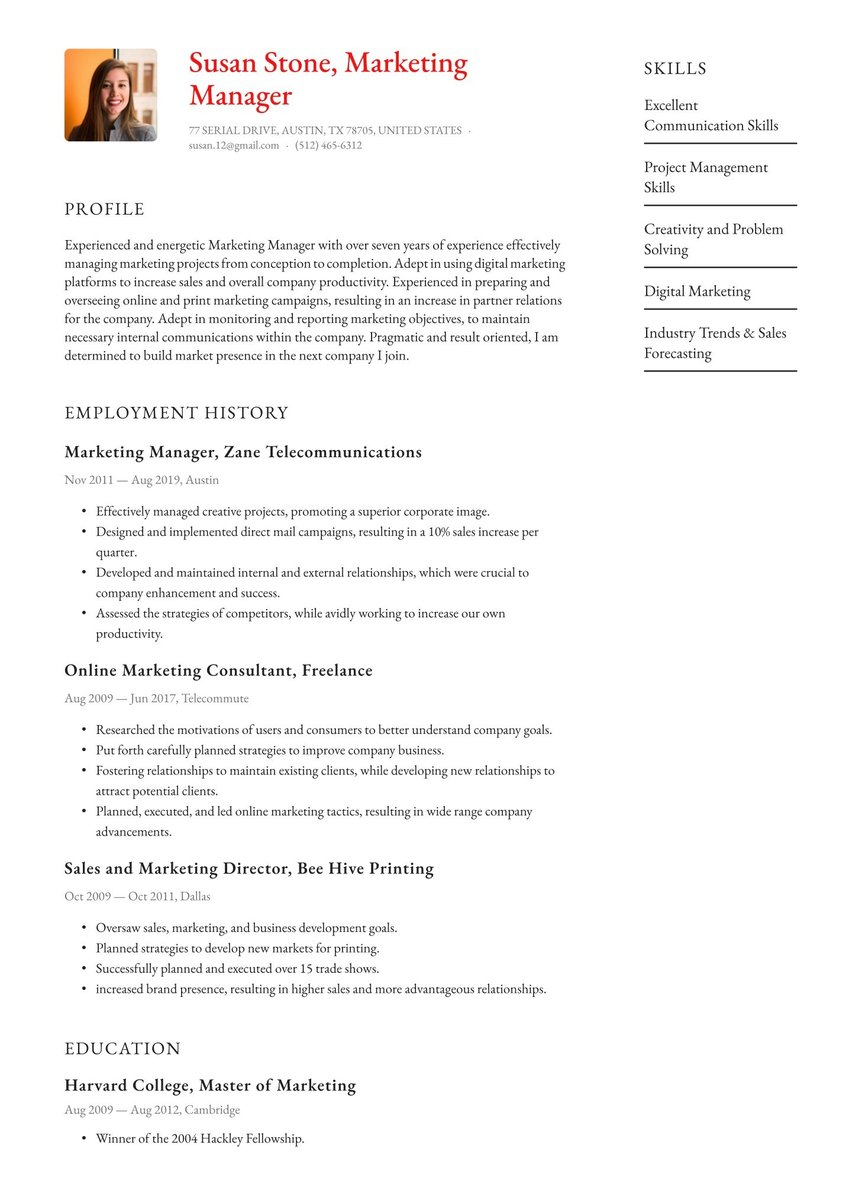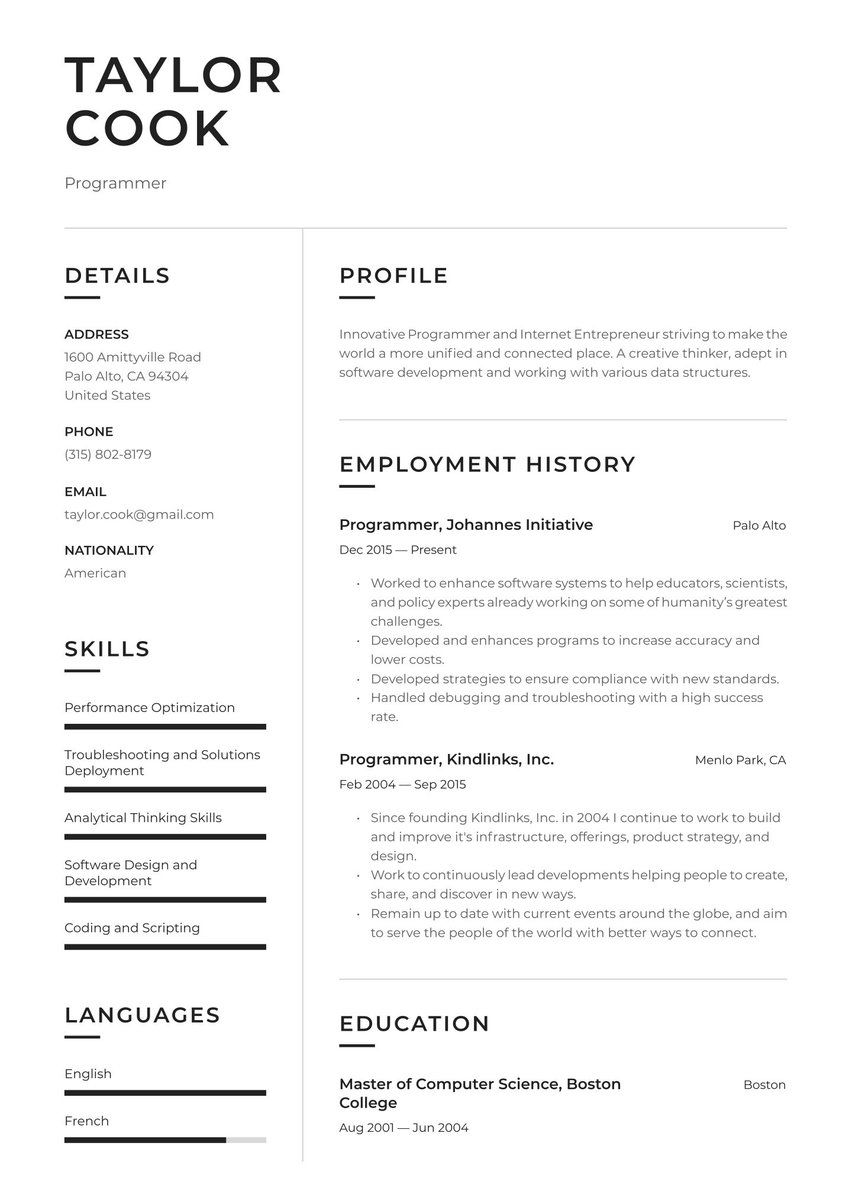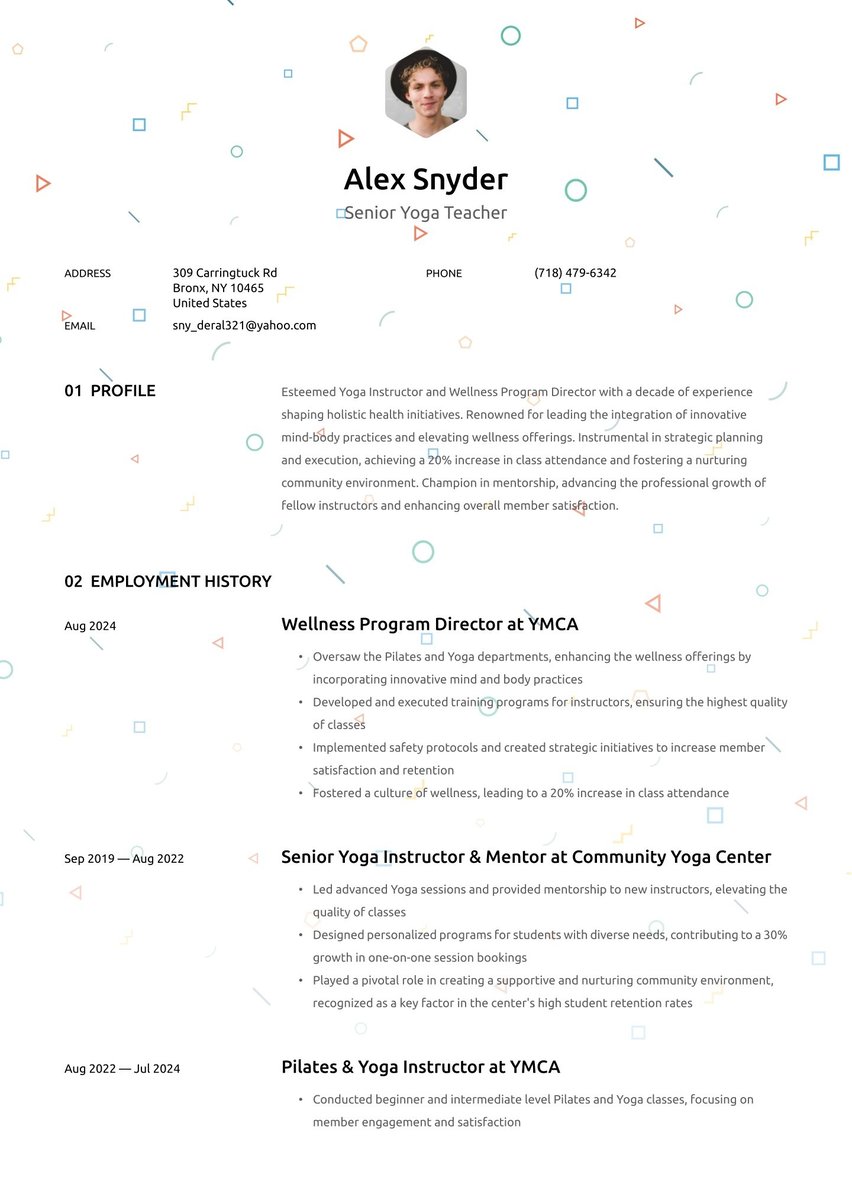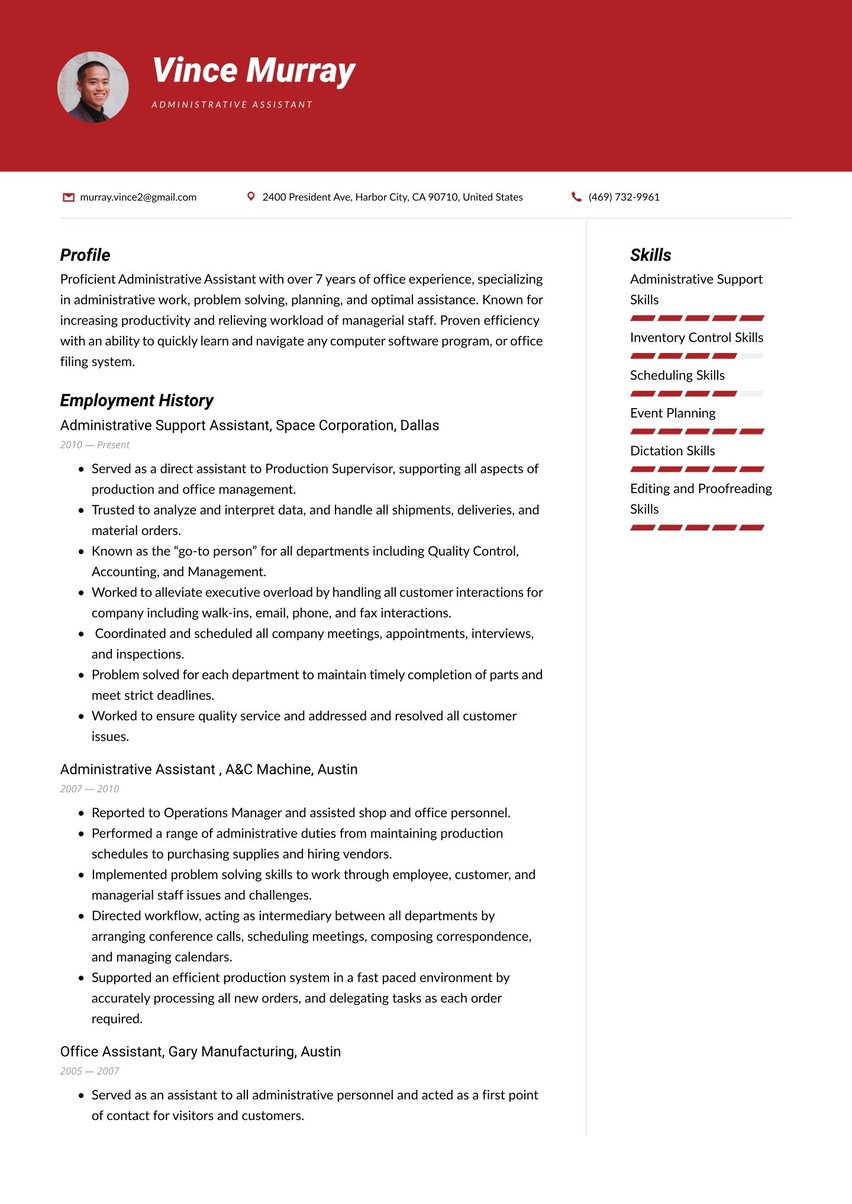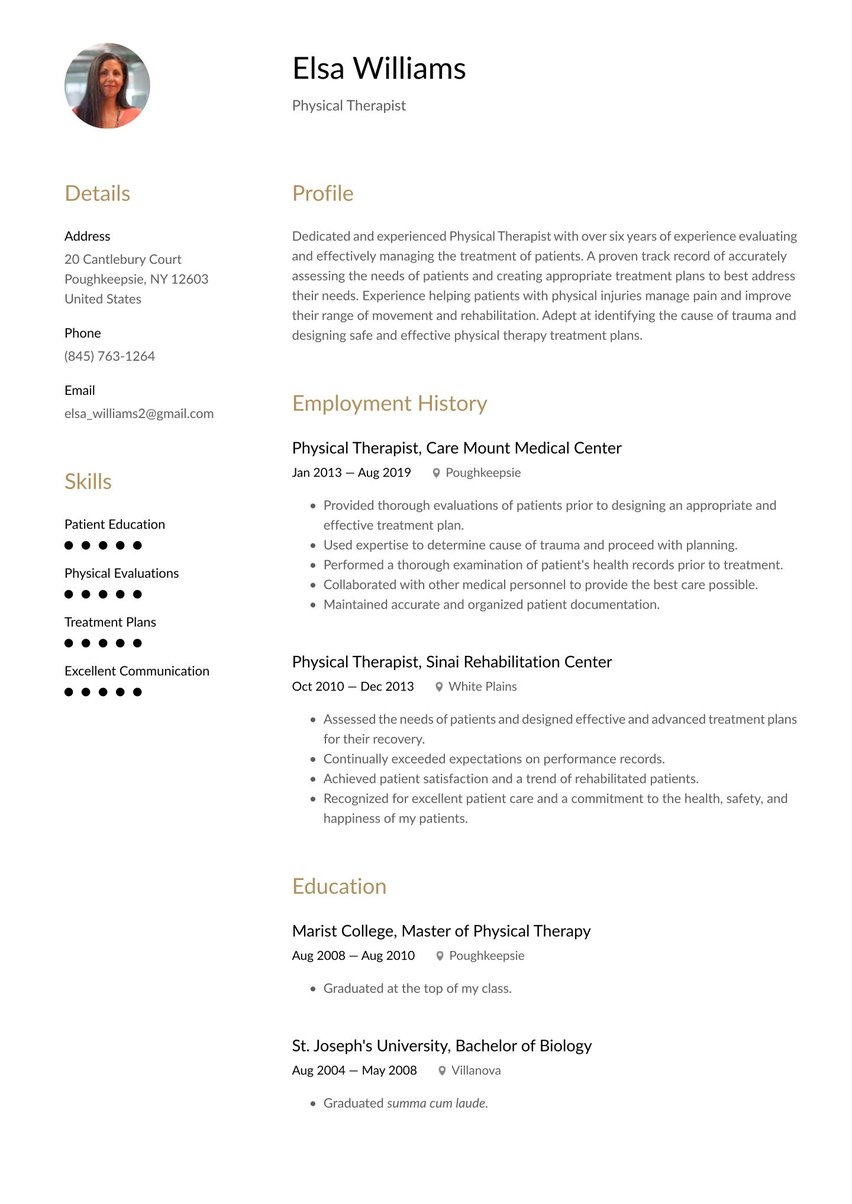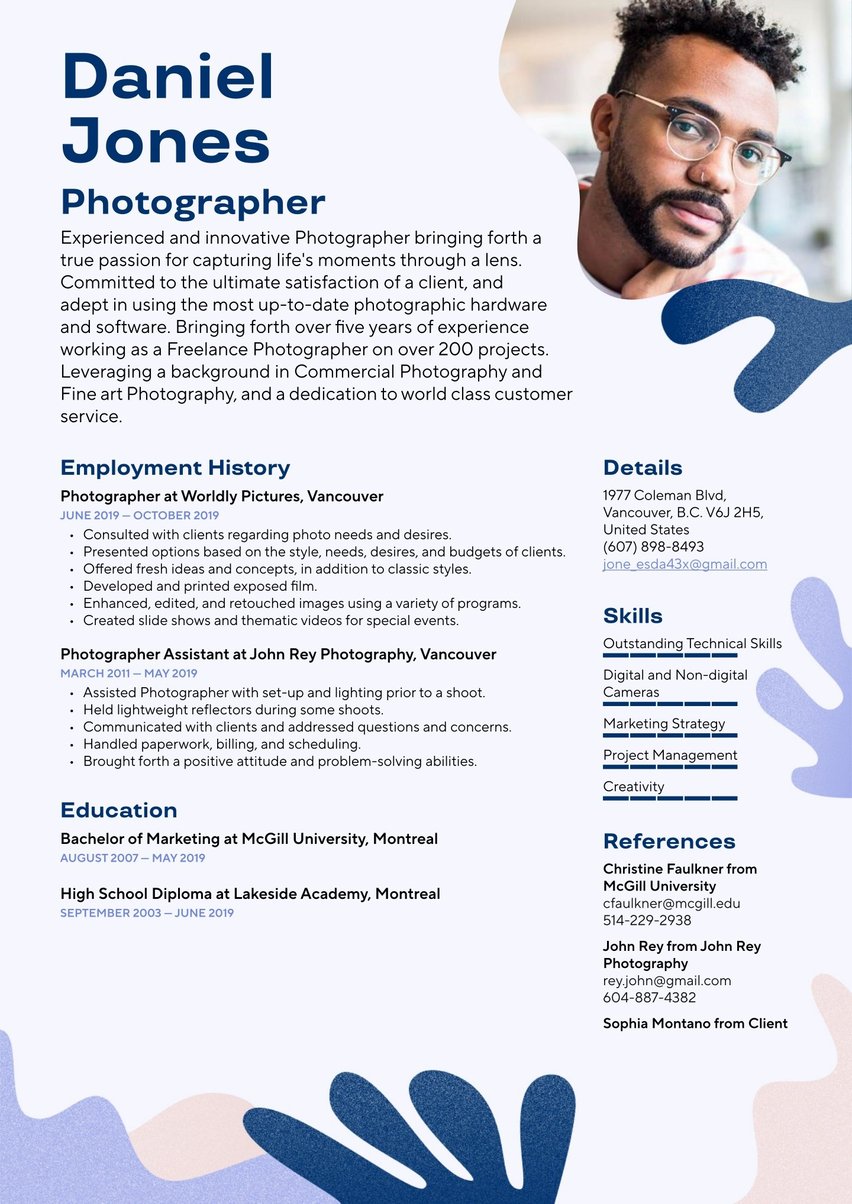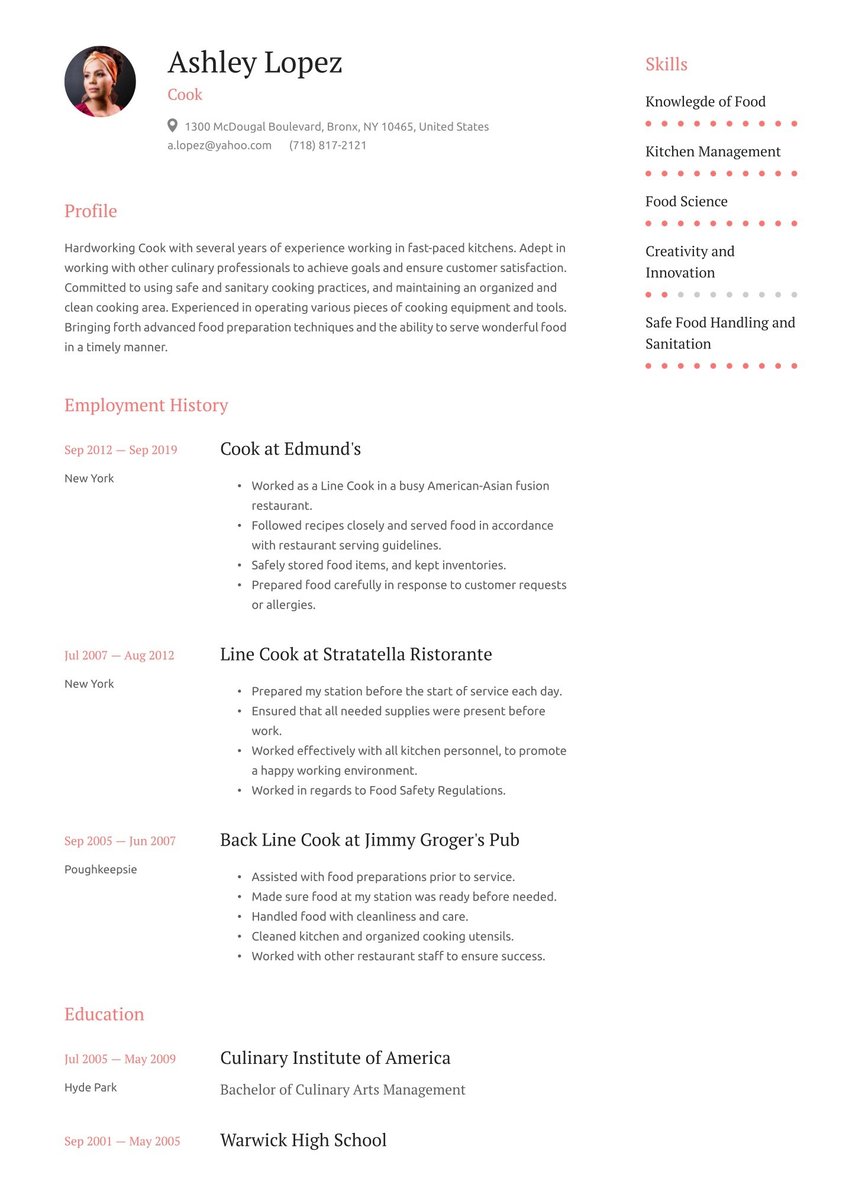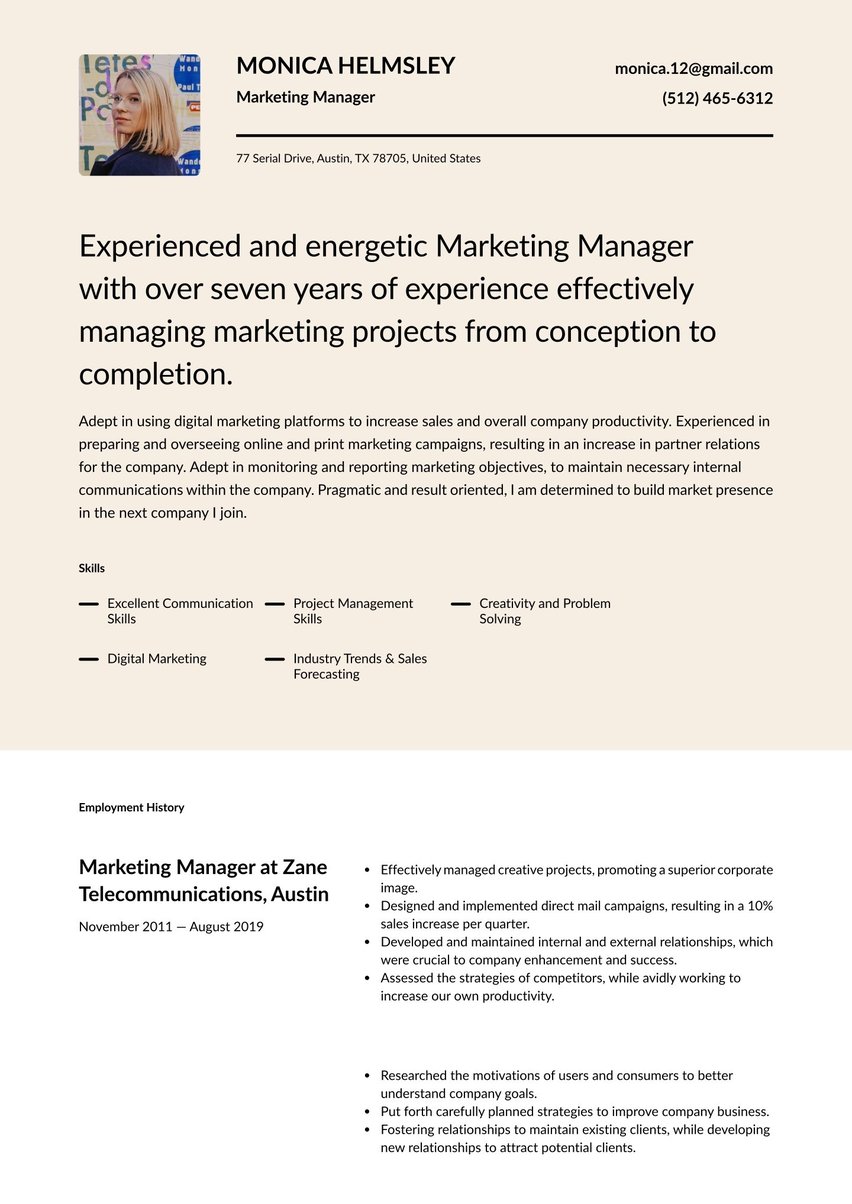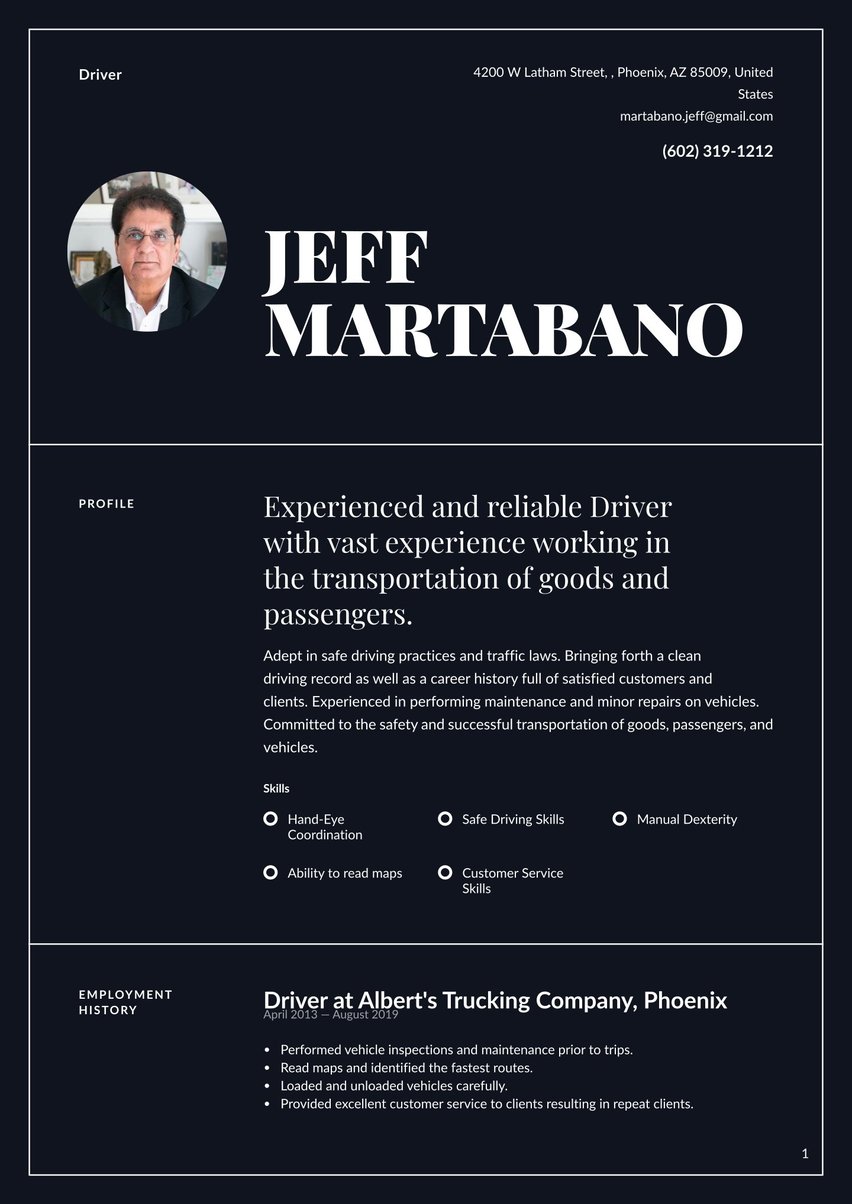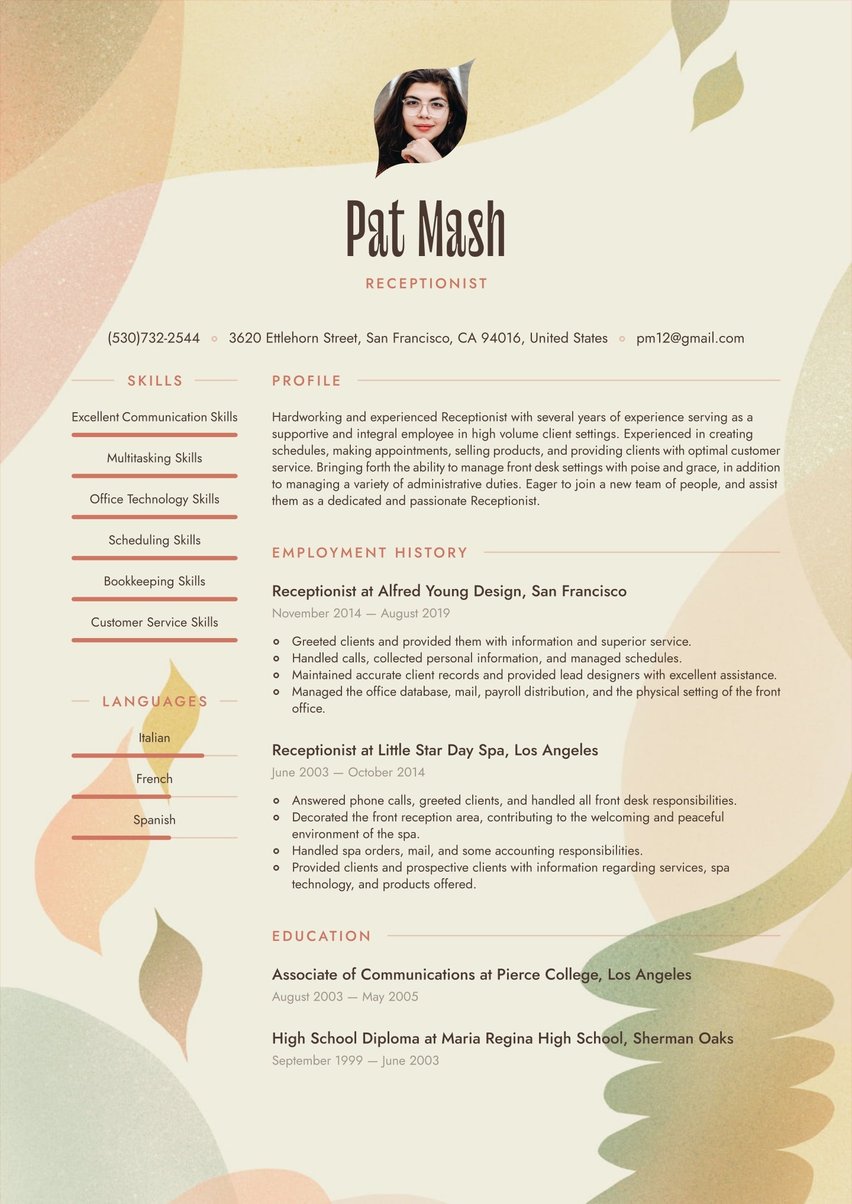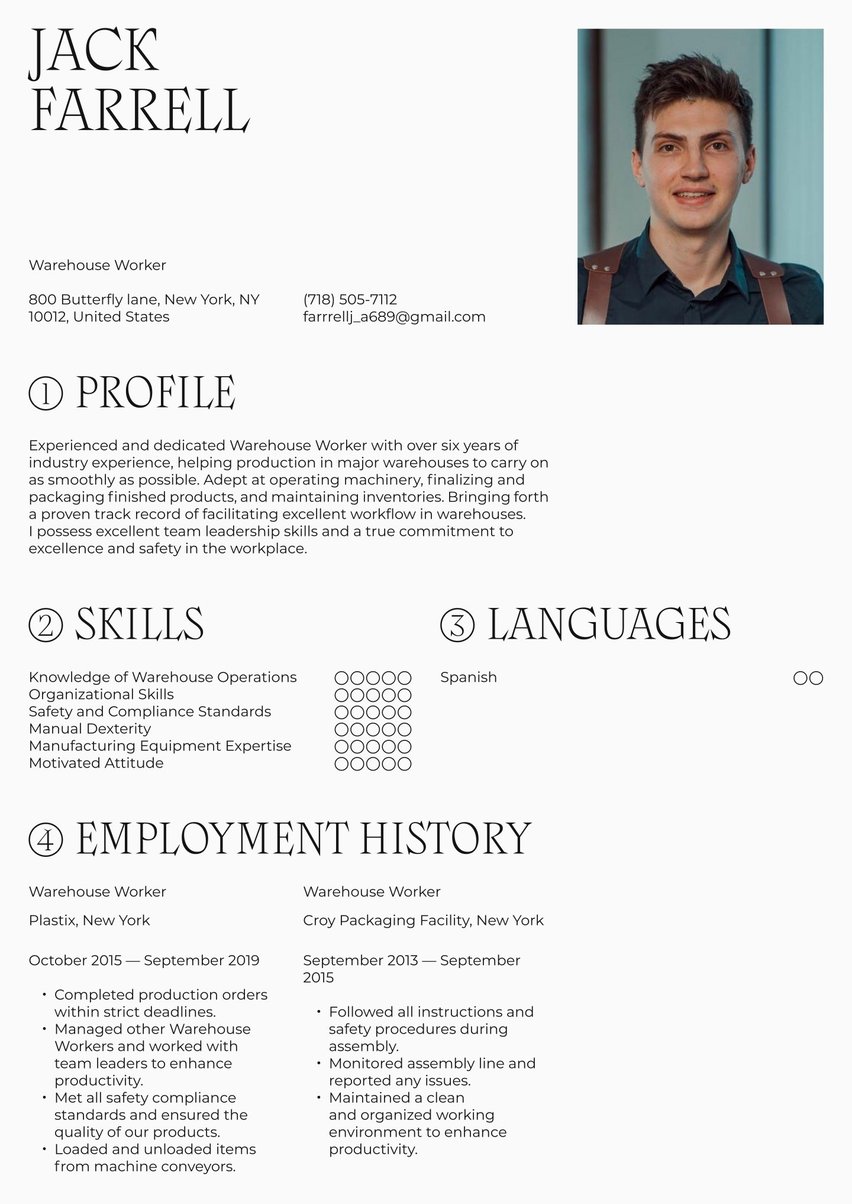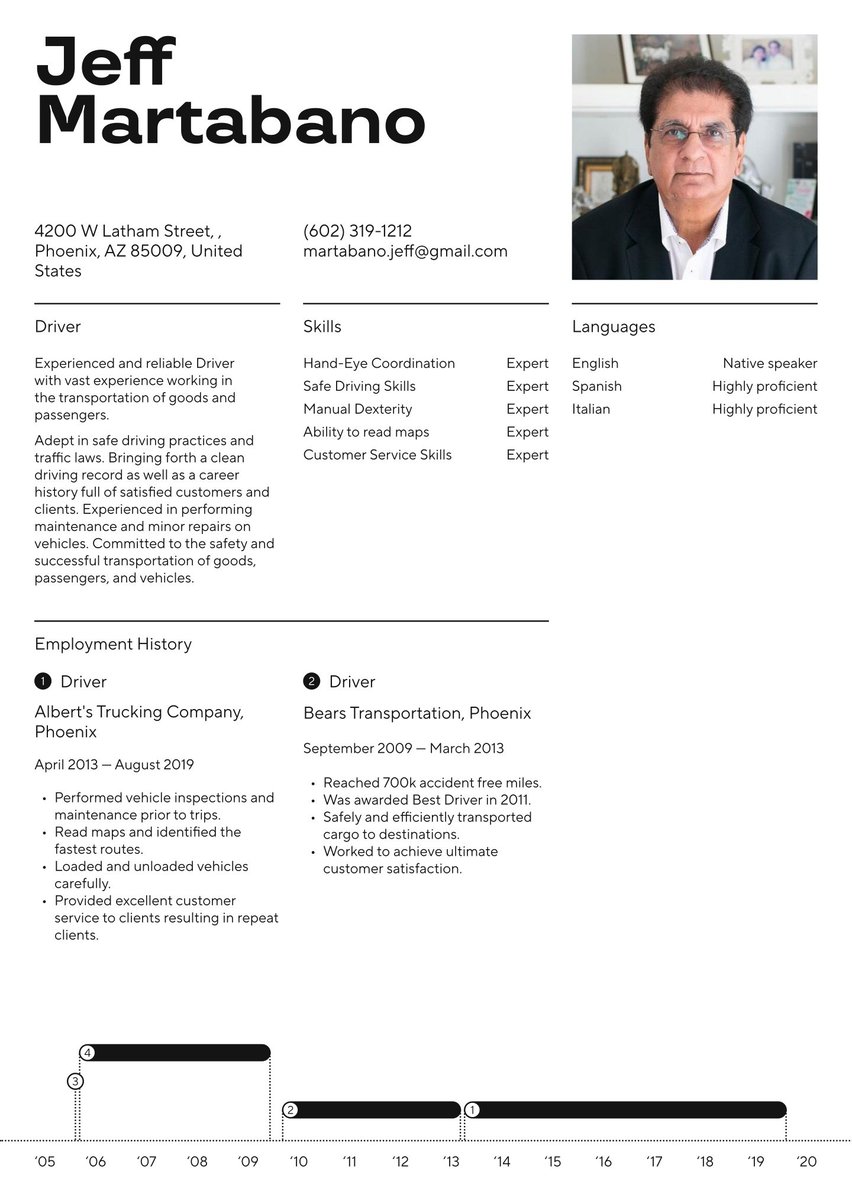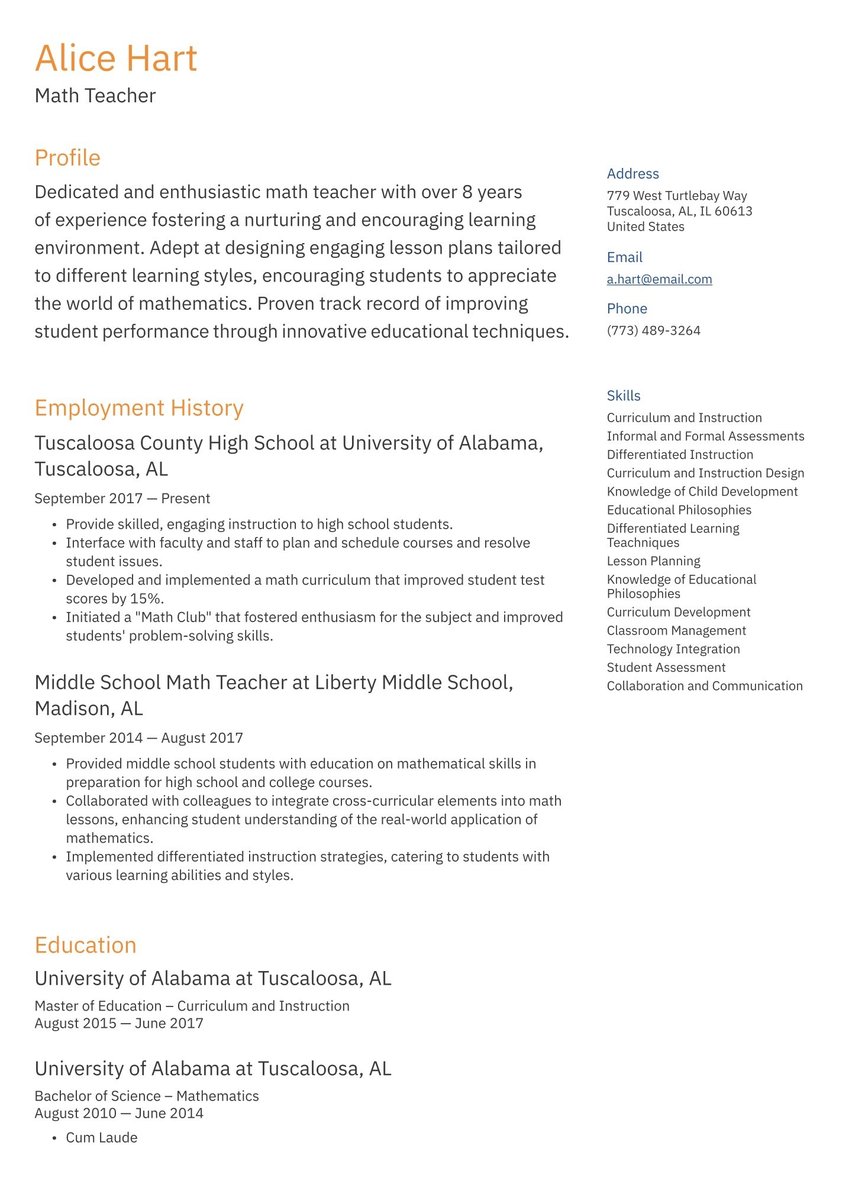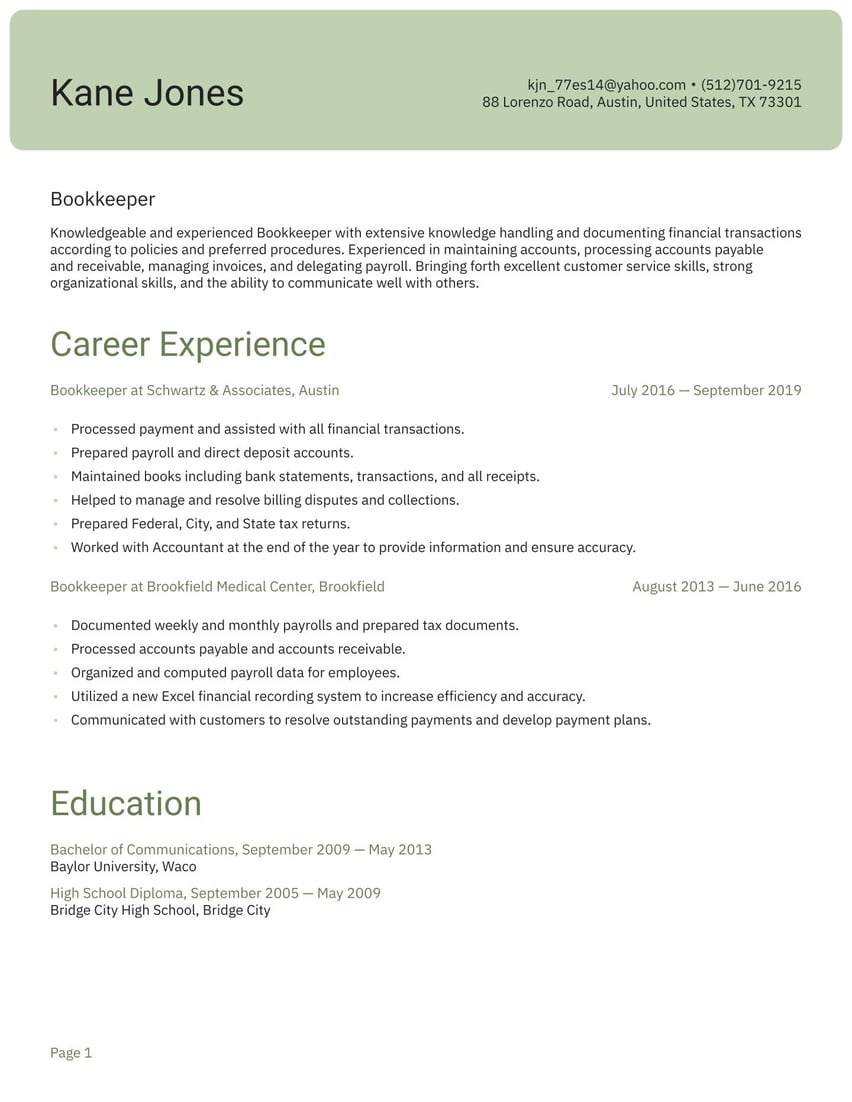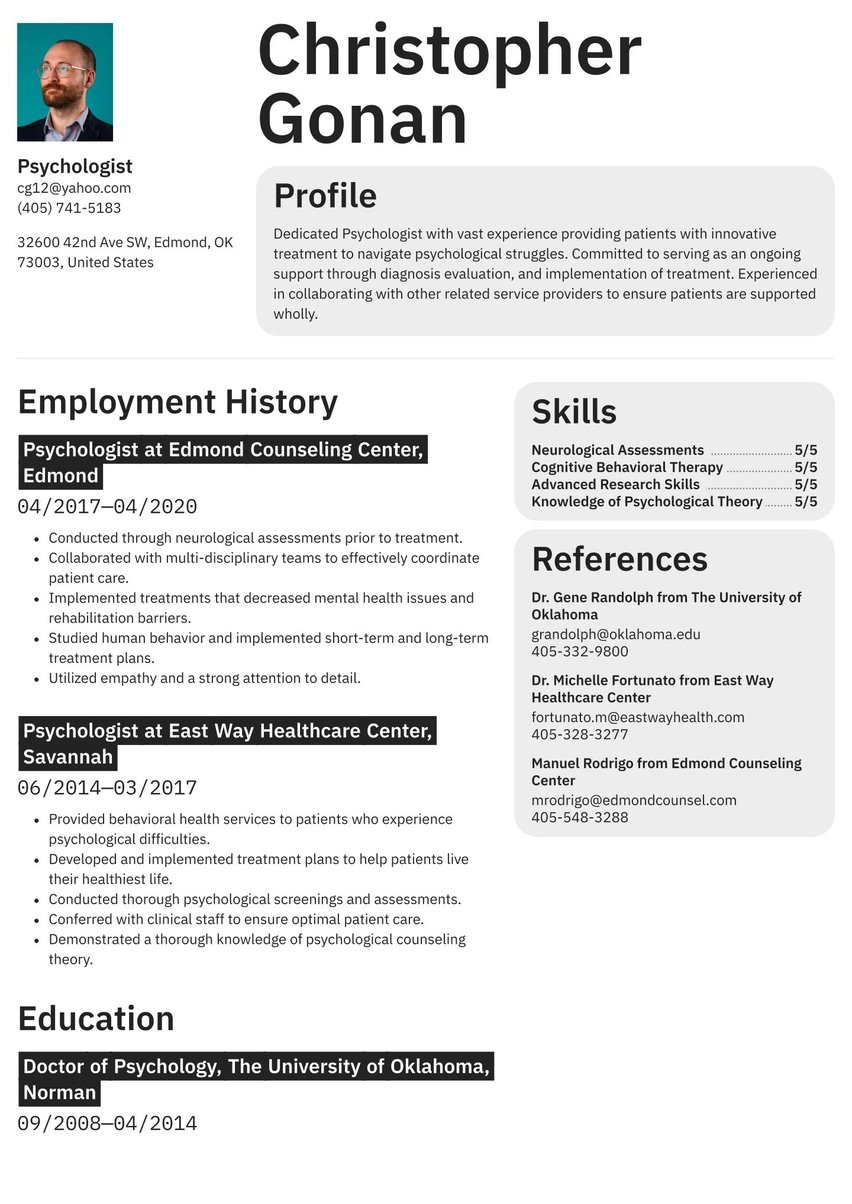Creating a journalist resume should come as second nature to anyone working in this field: It needs to tell an interesting story based on a simple structure, covering the major facts quickly without any irrelevant details. In other words, it’s a lot like your first weather story.
Journalist resume examples by experience level
But while you might have a leg up as a professional in a field that relies largely on writing, figuring out the details of writing a good journalist resume can be tricky. In addition to being well-written and nicely designed, it needs to follow a specific format to make sure it includes everything it should and nothing it shouldn’t.
We’re here to help. In this resume writing guide plus our journalist resume example, we’ll cover:
- What does a journalist do?
- How to write a journalist’s resume
- The five basic components of any resume and how to write them
- Format, design and layout considerations
According to the U.S. Bureau of Labor Statistics, reporters, correspondents and broadcast news analysts earned a median salary of $49,300 a year in 2020.
While declining advertising revenue for newspapers, radio and TV will result in fewer job openings over the coming decade, greater opportunities are anticipated for those who specialize in multimedia and online information design.
What does a journalist do?
Journalists work in print, broadcast and online, presenting news and features that inform and entertain. On any of these platforms, journalists can be reporters, editors, photographers, videographers, graphic designers, producers and more.
At newspapers and TV stations, reporters typically work a beat, specializing in a certain kind of reporting (crime, government, politics, business, sports, etc.). Good reporters keep their nose to the ground, working their sources for anything that smacks of news, always trying to be first with the story but taking great care not to get anything wrong.
Features writers and magazine editors don’t chase as much breaking news, though they may be responsible for producing content having to do with music, entertainment, gardening, food, travel, real estate and many other topics.
Editors assign, vet, correct and publish/produce all this content. Photographers and videographers provide visual information, while artists provide both information graphics and illustration. Designers pull all of this together, and online producers specialize in packaging it on the internet.
If you’re a journalist with a specific area of expertise such as business, technology or government, you may find it helpful to review our 300+ resume examples written for specific job titles. Check out the area you cover for even more advice to make your resume stand out as an expert in the field.
Journalists work in a variety of industries but are often associated other creative professions namely:
- Marketing and public relations
- Content creation
- Translation
- Writing
- Music and composition
- Translation
- Film editing
- Web development
- Consulting
- Wedding photography
- Landscaping
- Tourism i.e Guided tours
- Audio recording
- Volunteering
How to write a journalist resume
First of all, when writing a journalist resume, you can’t spell anything wrong. Your journalism resume should showcase your ability to do your job right, and that starts with a well-written, nicely designed, error-free page.
And you don’t need more than one. Even if you’re Bob Woodward or Wolf Blitzer, you still need only one page.
Here are the five basic components that every resume needs:
- Resume header with contact info
- Summary/profile
- Employment history
- Education
- Skills
How hard can it be?
Now all we have to do is fit all that into one page….
Optimize for ATS
Applicant Tracking Systems (ATS) are software programs that employers use to filter resumes according to whether they contain critical keywords. For example, if a radio station is seeking a traffic reporter to update listeners on the latest traffic jams, it would input keywords like “traffic reporter” into its ATS system. If your resume doesn’t contain these words, it’s likely to be automatically rejected without any human review.
This is why it’s important to scour job listings closely, identify the qualifications an employer is seeking and “optimize” your resume by including crucial keywords.
Choosing the best journalist resume format
Resume formats involve questions of structure, layout and design. You want your resume to look as good as it reads, so do your best to make it not just well-written but eye-pleasing.
Good resume design involves choosing a professional-looking, easy-to-read font at the right font size (no smaller than 10 points but no larger than 12). The page should have 1-inch margins on the top, bottom, left and right, and it needs an adequate amount of white space so it doesn’t feel too crammed.
Another format consideration involves choosing between chronological and functional resume structure. Most resumes list past jobs in reverse chronological order, putting the last job first and first job last. This is usually the best option if you have a relatively continuous employment history in your field.
The functional resume format is another option that groups jobs into projects or organizes them to showcase specific skills. For example, you might have a section called “Photography Projects” or “Freelance Publications.” This can be especially useful for freelancer writers and contractors who did not follow a traditional career path moving from one full-time job to the next.
Resume header: How to reach me
The header is an attractively designed space at the top of the resume that contains the following information about you:
- Name
- Occupation
- Address
- Phone number
The header is the easiest part to write and the hardest to design. Your name should be the largest element on the page, presented in a carefully chosen font. Your contact info should be organized in a way that’s visually appealing, and you may opt to add an accent color as well, or even a photo of yourself.
If you're a visual journalist or designer you may enjoy the process of designing your own resume layout. However, if you don’t have the time or patience to fuss with word processors, you might find that a resume template simplifies the process. Check out Resume.io’s collection for dozens of professional headers that can help you to stand out as a serious and qualified journalist.
And once your header is ready, you have just four things left to do….
Journalist resume summary example: Why hire me?
The resume summary is your elevator pitch to prospective new employers. It should be a short but well-written explanation of what you do, why you’re good at it and why this employer should hire you.
Job experience, education and skills may all be appropriate to mention in your summary – even though there are separate sections below addressing each of these. It’s called a “summary” for a reason, allowing you to pick and choose your most impressive achievements. And while almost everything else on a resume appears in the form of a list, the summary does not. Here you have free rein to speak directly to the hiring manager in your own words.
Here’s the summary from our journalist resume sample:
Passionate and dynamic Journalist committed to bringing honest and powerful news to the public. Adept in rigorously investigating events and stories to deliver the most accurate and engaging content possible.
Employment history sample: Where I’ve worked
The employment history section of your resume may be the most closely read, so you need to get this right. If you have a history of employment in journalism, list your past employers here in reverse chronological order (last job first, first job last).
List the name of the employer, where it’s located, your job title and the years you worked there. But also include bullet points below each job indicating what you did there, and try to be specific, using facts and figures wherever possible.
Journalist, Empire Media, New York
February 2017 - July 2021
- Developed interesting, relevant, and authentic feature articles and editorial pieces.
- Evaluated events and followed up on news leads to deliver the most important stories possible.
- Remained up-to-date about events, public opinion, and social media occurrences to ensure the delivery of the most engaging journalism.
- Effectively communicated with other writers and staff members.
Reporter, Williamson News, New York
September 2014 - January 2017
- Researched and analyzed potential news stories.
- Tracked developing stories drawing interest online.
- Collaborated with staff writers to plan and develop news stories and segments.
- Covered a range of video content including breaking news headlines and features.
- Remained focused on delivering the timely news our readers needed.
Journalist resume education example: Where I studied
The education section of a resume lists the places you went to school, with your highest educational attainment listed first. You’ll probably need a bachelor’s degree to get a job as a journalist, so if you have one, list that first. If you do have a postsecondary degree, you don’t have to list your high school, although you can if there’s room.
If you were a stellar student who graduated with honors or distinguished yourself in other ways while in school, you can also mention that here. Check out our journalist resume sample for an idea of how to format your education section.
Bachelor of Arts in Communications, Fordham University, New York
September 2009 - May 2013
High School Diploma, St. Catherine's Academy, New York
September 2005 - May 2009
Resume skills sample: What I can do
Every journalist resume sample should include a short list of the applicant’s special skills. Typically these include hard skills (technical skills necessary to get the job done) as well as soft skills (people skills that enable you to work well with others).
Your hard skills might be investigative reporting, an eye for stunning photography, a mastery of video editing or many other talents. Your soft skills might involve effective communication, team leadership or a talent at getting sources to open up to you.
Check out the skills section from our journalist resume sample below:
- Journalism
- Investigative Reporting
- Research and Analysis
- Advanced Communication Skills
- Ability to Multitask
- Creative Thinking Skills
Key takeaways
- A journalist resume should showcase your talents in writing, editing and design, and it must be error-free.
- Make sure your resume contains the five essential components that every resume needs.
- Pay attention to the format and layout of your resume sample so that it looks as good as it reads.
- To sidestep potential errors in formatting, your best bet is to use a resume template where the design has already been done for you.
- Check out our other resume examples for even more specific tips depending on your area of expertise.


.jpg)

.jpg)
